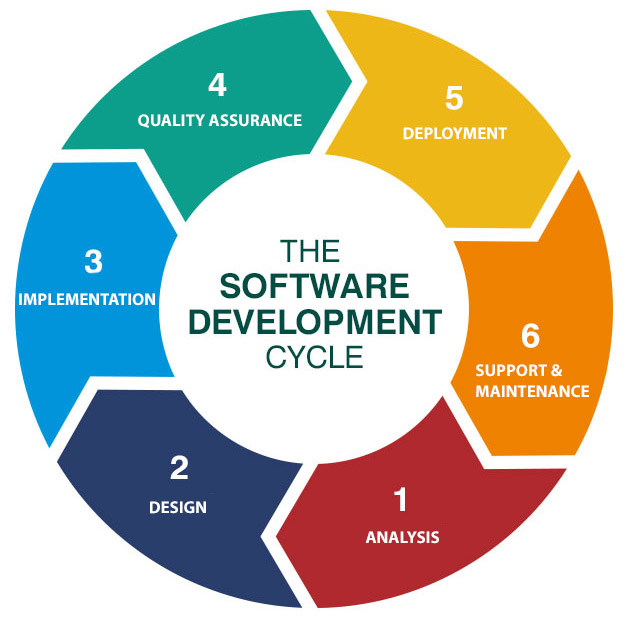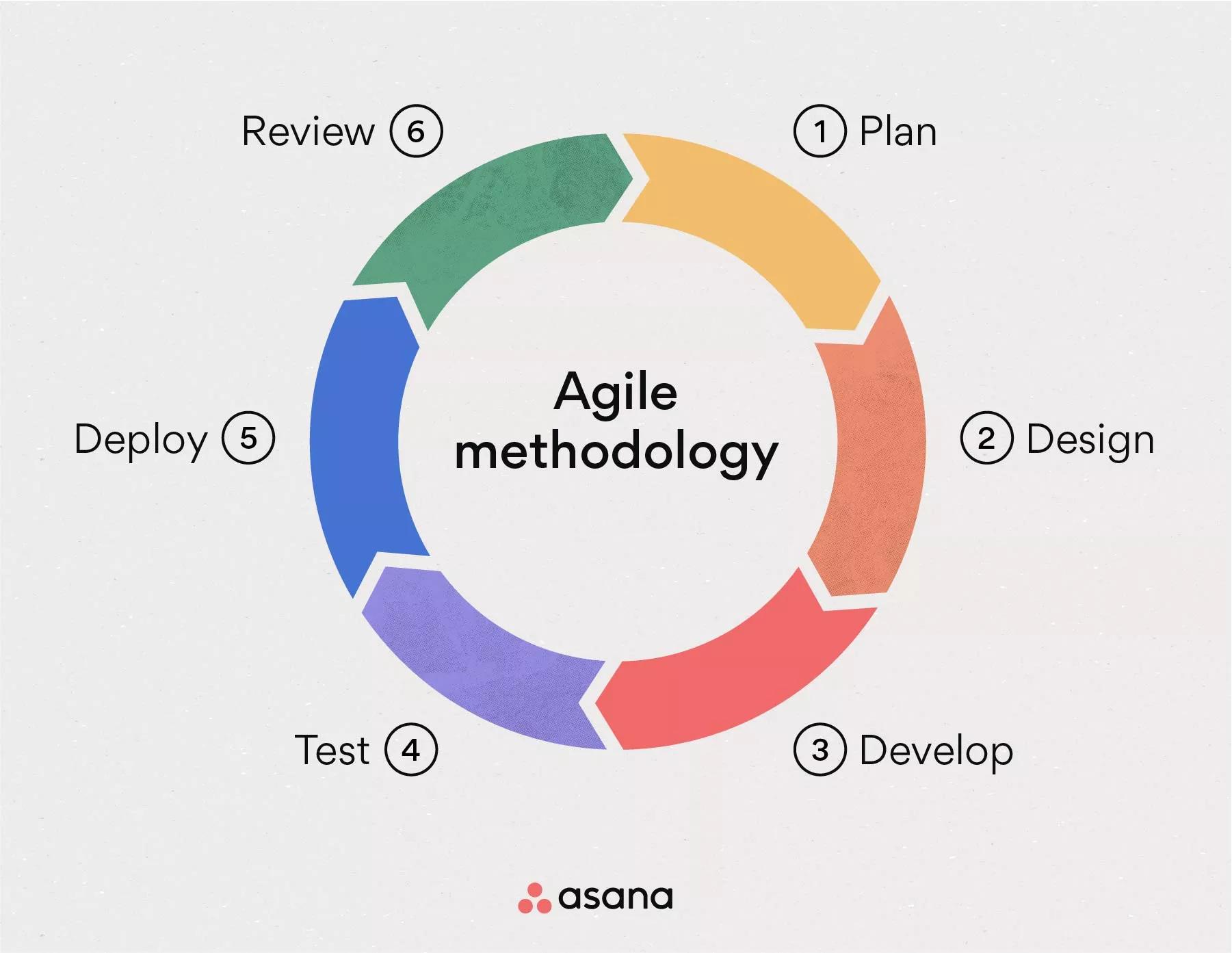In today’s digital-first environment, software development is the backbone supporting innovations that redefine how we live, work, and interact. As technology permeates every sector, understanding the intricacies of software development becomes crucial not only for aspiring developers but also for business stakeholders and tech enthusiasts.
This article will unravel the complexities of software development, providing a detailed insight into its processes, historical evolution, and the pivotal role it plays in modern technology landscapes.
What is Software Development?
Basically, software development is the process of planning, specifying, designing, programming, documenting, QA testing, and bug-fixing involved in creating and maintaining applications, frameworks, or other software components. It is a planned and structured process that is essential for creating software products and applications that meet specific needs.
The concept of software development dates back to the invention of the first computers in the mid-20th century. Early software development was limited and primarily focused on basic computational tasks. However, as computers have become more sophisticated, so has software development.
Today, it has evolved from simple programming to complex systems that manage everything from social media apps to enterprise software. Software development drives now provide numerous benefits, including:
- Enhanced Efficiency. Automation of mundane tasks frees up time for focusing on more strategic activities.
- Increased Productivity. Software solutions are designed to optimise various business processes, thereby boosting productivity.
- Innovation. Continual improvements and developments in software encourage innovation by solving existing problems in novel ways.
6 Key Phases of Software Development Life Cycle (SDLC)
Software Development Life Cycle (SDLC) is a framework that defines the process used by software developers. It began to take shape in the 1960s to improve the development of software systems to manage and control the complex process involved in software development.

Here’s a closer look at each phase:
- Requirement Analysis. This initial phase involves gathering and analysing user requirements to ensure the final product will meet their needs.
- Design. During this phase, the software’s architecture is designed, outlining technical specifications and preparing blueprints for developers.
- Implementation and Coding. This is the phase where actual software programming takes place, turning design documentation into working software.
- Testing. After coding, the software undergoes rigorous testing to ensure it is bug-free and meets the original specifications.
- Deployment. Once tested, the software is deployed to a live environment where users can begin to utilise it.
- Maintenance. Developers continue to update the software, fixing any arising issues and improving functionality over time.
Popular Software Development Methodologies
Each software project may require a different approach to management and execution. Several methodologies guide the development process, including:
Agile Development

Agile development is a project management approach that prioritizes the rapid and continuous delivery of functional software through iterative and incremental cycles. This methodology encourages flexibility and adaptability, allowing development teams to respond to changing requirements and customer feedback quickly.
Likewise, agile promotes frequent collaboration with stakeholders and ensures that each iteration delivers a working product, enabling teams to refine and improve with each cycle.
Scrum

Scrum is a specific framework within the agile methodology, designed to streamline project development by dividing the work into short, time-boxed intervals known as sprints. Each sprint typically lasts two to four weeks, during which the team focuses on completing a set of predefined tasks. Daily meetings, often called daily stand-ups, are held to track progress and address any roadblocks.
With that said, scrum promotes teamwork, accountability, and the ability to adapt to changes as the project progresses, ensuring that each sprint moves the project closer to completion.
Waterfall

Waterfall is a traditional software development methodology that follows a sequential and linear process. In this approach, each phase of the project—such as requirements gathering, design, implementation, testing, and deployment—must be completed fully before moving on to the next phase.
Likewise, this rigid structure is ideal for projects with clearly defined goals and stable requirements, but it can be less flexible in accommodating changes once the project is underway. Waterfall emphasizes careful planning and documentation throughout each stage.
DevOps

DevOps is a collaborative approach that bridges the gap between software development and IT operations teams. It focuses on automating and streamlining the software delivery process to enhance efficiency and reduce the time between development and deployment.
Likewise, DevOps encourages continuous integration, continuous delivery (CI/CD), and close communication among developers, system administrators, and quality assurance teams. It aims to improve software quality, enhance operational performance, and deliver new features more quickly and reliably.
Types of Software Development
Software development is a diverse field, with different specialties catering to various aspects of digital applications and systems. Below is an overview of the key types of software development:
Desktop Development
Desktop development focuses on creating software applications that run locally on a user’s computer. These applications are built specifically for desktop operating systems such as Windows, macOS, or Linux.
Desktop developers need to understand system architecture, user interface design, and, often, more complex aspects of computer operation, including memory management and hardware integration. Examples include word processors, media players, and accounting software.
Mobile Development
Mobile development is geared towards creating applications for mobile devices like smartphones and tablets. This field is divided into native mobile development, which uses languages and tools specific to a platform (e.g., Swift for iOS, Kotlin for Android), and cross-platform development.
Likewise, mobile development allows developers to write code once and deploy it across multiple platforms using frameworks like React Native or Flutter.
Web Development
Web development involves building applications that run on a web server and are accessed through a network using a browser.
This category is often divided into front-end (client-side), back-end (server-side), and full-stack development. Front-end developers work on the interface and user interaction elements using technologies like HTML, CSS, and JavaScript. On the other hand, back-end developers focus on databases, scripting, and website architecture using languages like PHP, Ruby, and Python. Full-stack developers handle both client and server software.
Database Development
Database development primarily focuses on designing, implementing, and maintaining a robust database architecture. This plays a crucial role in ensuring data consistency, integrity, and security within organizations. They maintain reliable and secure data systems that support business operations.
To achieve this, developers work extensively with database management systems (DBMS), enabling them to create, read, update, and delete data, which serves as the backbone for various applications. In this field, skills in SQL are essential. Additionally, proficiency with traditional databases such as Oracle, MySQL, and Microsoft SQL Server, as well as newer NoSQL databases like MongoDB, is highly valuable.
Cloud Computing
Cloud development involves creating services and applications that run on a distributed network using virtualised resources, accessible over the internet. This includes developing applications that are scalable and available based on the demand, using platforms like Amazon Web Services (AWS), Microsoft Azure, or Google Cloud Platform.
Likewise, cloud developers work on deploying applications in cloud environments, managing scalable resources, and ensuring data security in remote servers.
Jobs Related to Software Development
- Software development careers are varied and can range from software engineers and developers to project managers and QA testers. Each role requires a unique set of skills and contributes differently to the development lifecycle.
- Software Engineer. A software engineer develops software applications by applying engineering principles and methodologies. This role requires both technical expertise and problem-solving abilities to design, build, and maintain reliable software systems.
- Systems Analyst. A systems analyst is critical in analyzing and designing technology solutions for business challenges. In addition, this role bridges the gap between business objectives and software solutions by understanding both business needs and technical possibilities.
- DevOps Engineer. DevOps engineers focus on the intersection of coding and deployment, working to streamline software continuous integration and delivery. Moreover, they facilitate efficient collaboration between development and operations teams to help ensure smooth and rapid software deployments.
- Project Manager. The project manager oversees software projects, managing crucial aspects such as timelines, budgets, and project scope. They ensure that projects are delivered on time and within budget while meeting the project’s overall objectives.
Conclusion
In summary, software development is a dynamic and ever-evolving field that continually offers opportunities for creativity, innovation, and effective problem-solving. Moreover, it plays a crucial role in driving the technological advancements that shape industries and significantly impact our everyday lives. For those interested in pursuing a career in software development or businesses looking to develop software solutions, understanding the fundamentals is an essential first step toward achieving success.





